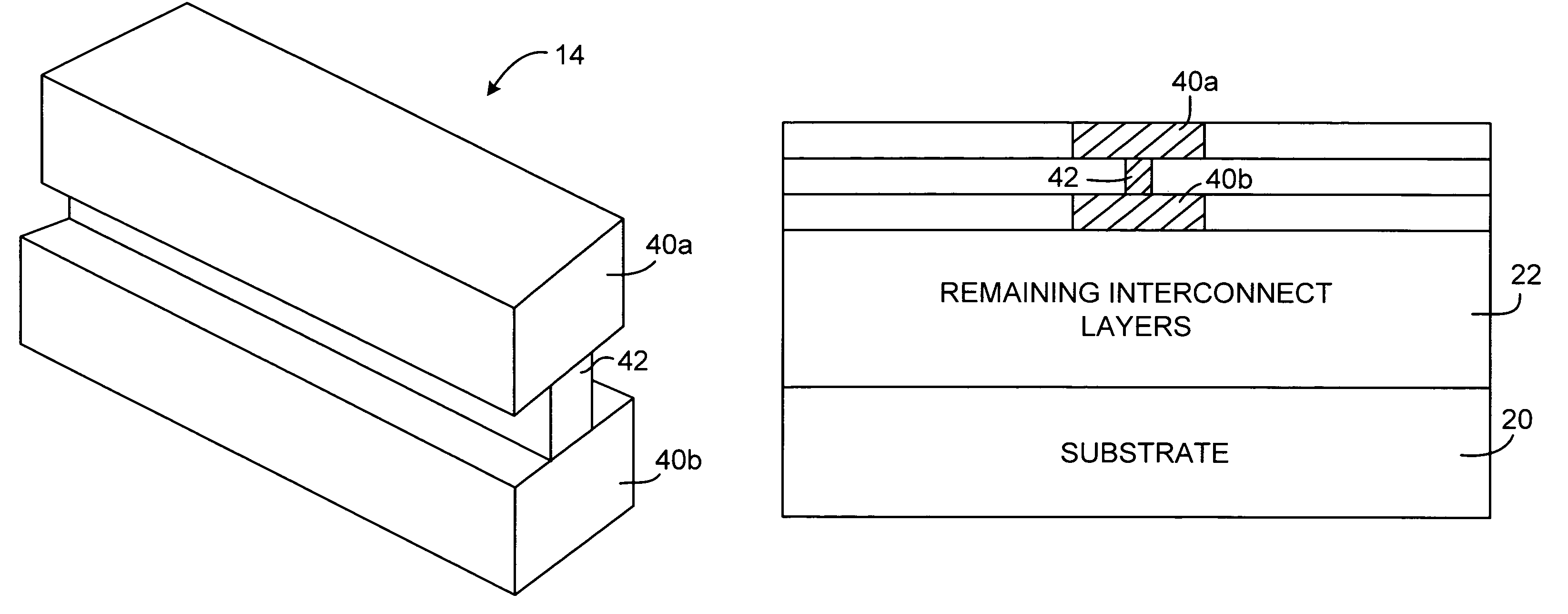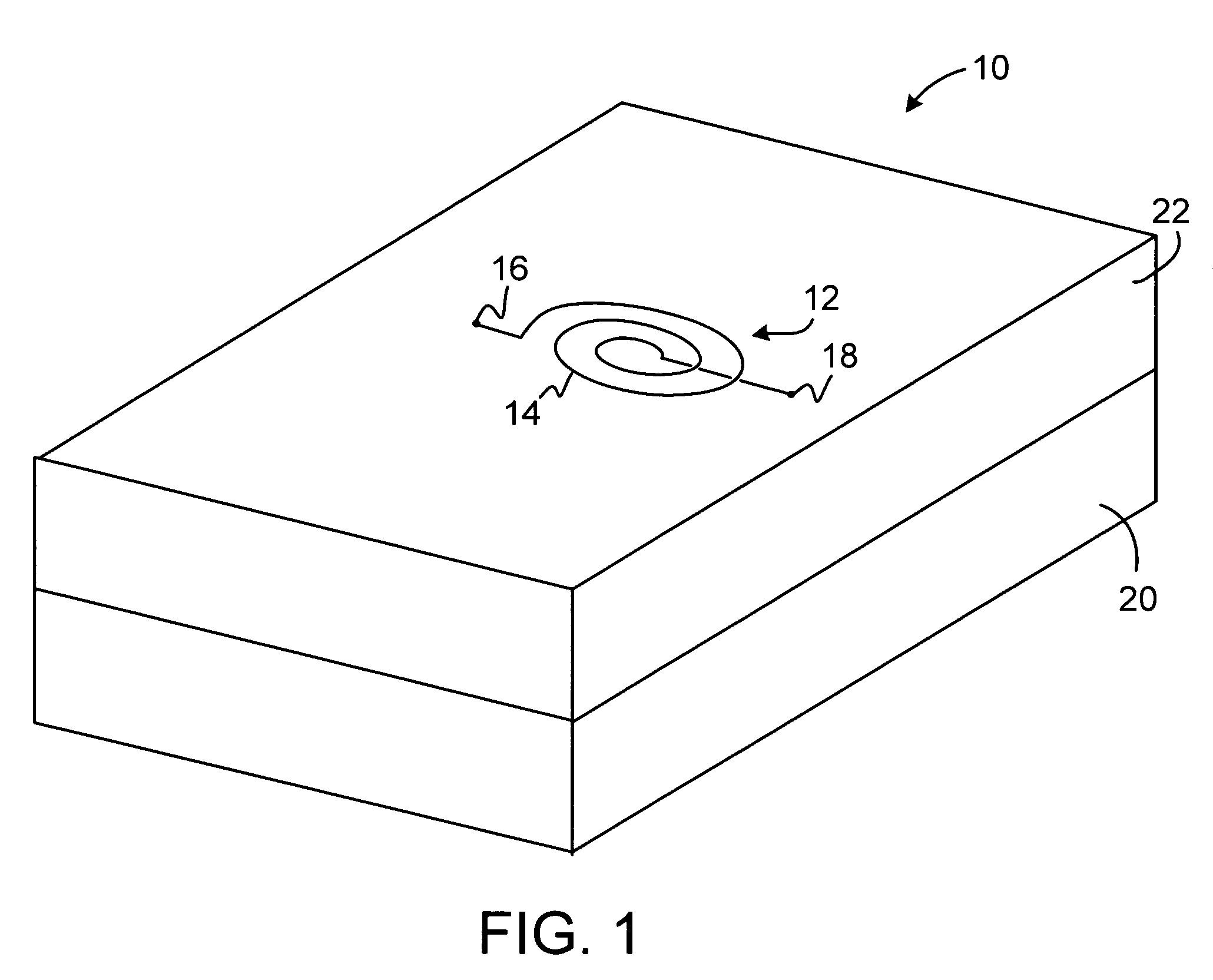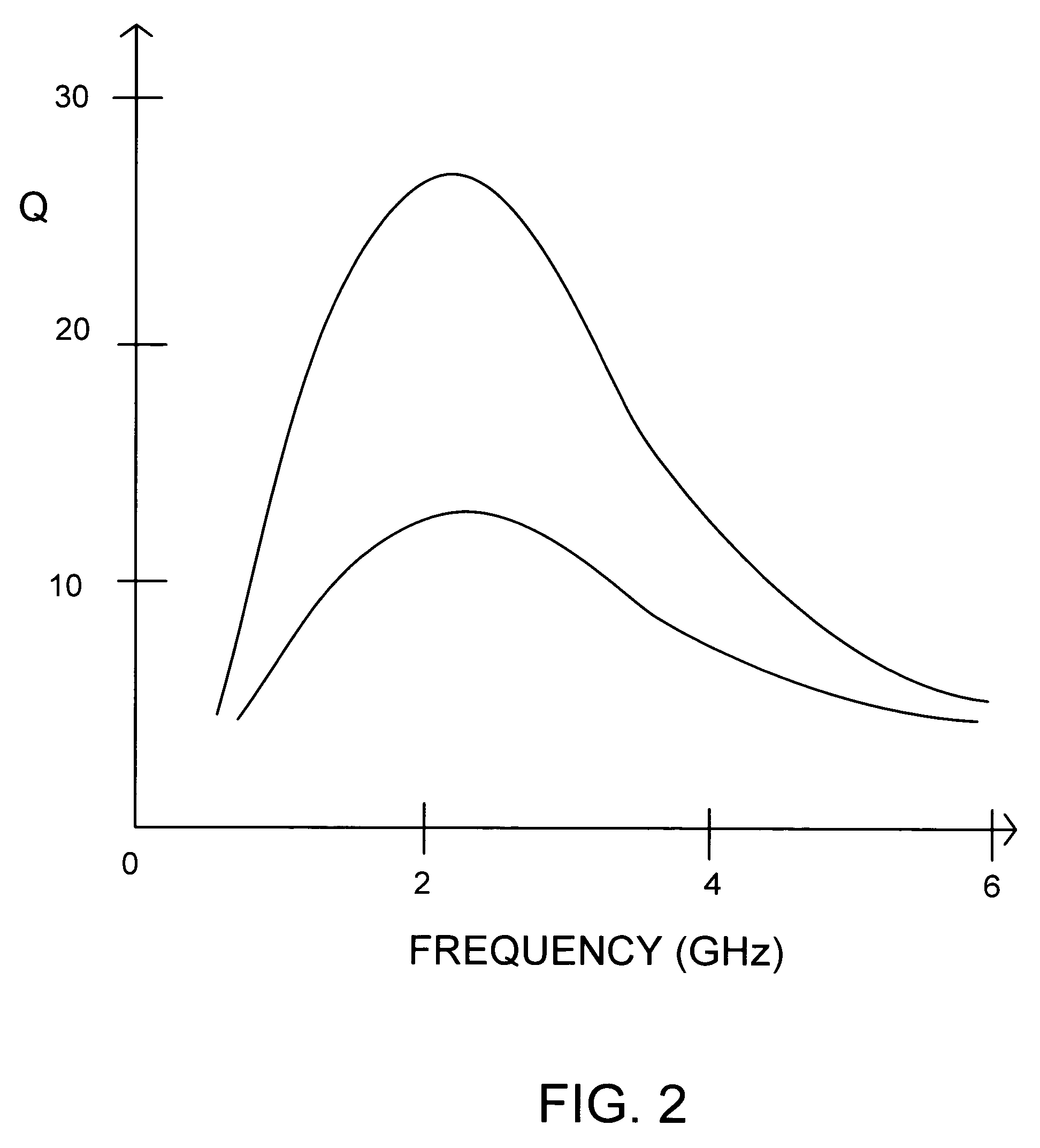Integrated circuit inductors
a technology of integrated circuits and inductors, applied in the field of inductors, can solve the problems of poor q value of inductors, low efficiency of inductors, degrade circuit performance, etc., and achieve the effect of improving the q-factor of inductors
- Summary
- Abstract
- Description
- Claims
- Application Information
AI Technical Summary
Benefits of technology
Problems solved by technology
Method used
Image
Examples
Embodiment Construction
[0048]An illustrative integrated circuit 10 having an integral integrated circuit inductor 12 is shown in FIG. 1. Inductor 12 is formed by coiling a conductive line 14 so that magnetic flux is channeled through its center. During operation of inductor 12, alternating current (AC) signals are applied to conductive inductor line 14 using terminal 16 and terminal 18.
[0049]The integrated circuit 10 may be formed from a semiconductor substrate 20 in which transistors and other semiconductor devices are formed. During operation of integrated circuit 10, these devices interact with inductor 12 through conductive lines connected to terminal 16 and terminal 18. Because inductor 12 is formed on the same integrated circuit structure as the transistors and other devices, it is not necessary to connect inductor 12 to the circuitry of circuit 10 through a special package or external wires. This can improve the performance of circuit 10, while reducing cost and increasing reliability.
[0050]The sub...
PUM
| Property | Measurement | Unit |
|---|---|---|
| depths | aaaaa | aaaaa |
| width | aaaaa | aaaaa |
| size | aaaaa | aaaaa |
Abstract
Description
Claims
Application Information
 Login to View More
Login to View More - R&D
- Intellectual Property
- Life Sciences
- Materials
- Tech Scout
- Unparalleled Data Quality
- Higher Quality Content
- 60% Fewer Hallucinations
Browse by: Latest US Patents, China's latest patents, Technical Efficacy Thesaurus, Application Domain, Technology Topic, Popular Technical Reports.
© 2025 PatSnap. All rights reserved.Legal|Privacy policy|Modern Slavery Act Transparency Statement|Sitemap|About US| Contact US: help@patsnap.com



